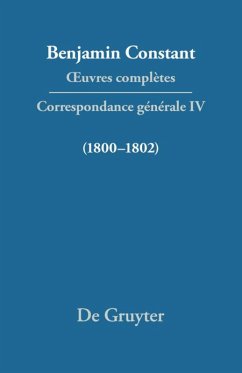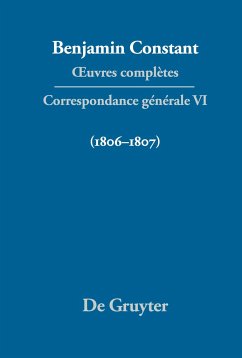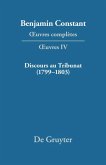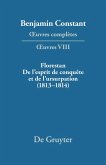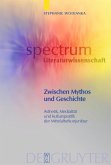This fourth volume of the »Correspondance generale« contains 368 letters written during the period of the Consulat when, as a member of the Tribunat until January 1802, Constant acquired a reputation as a brilliant orator and outspoken opponent of Bonaparte. It was also a period when he produced a number of manuscripts on politics and religion on which he would base works published between 1814 and 1830. The correspondence also contains letters of compelling human interest to and from Julie Talma and an extraordinary epistolary exchange with Anna Lindsay, with whom Constant fell in love in 1800.
Ce quatrième tome de la Correspondance générale de Benjamin Constant, qui présente le texte annotée de 368 lettres écrites entre janvier 1800 et décembre 1802, constitue un important document pour les historiens du début du dix-neuvième siècle en France. Ce volume couvre les deux premières années du Consulat, époque où Constant, en tant que membre du Tribunat, acquit une réputation de brillant orateur et de critique sévère du gouvernement de Bonaparte. Les opinions libérales de Constant, ainsi que ses rapports avec Germaine de Staël, le font exclure du Tribunat en janvier 1802; cependant, comme on peut le voir dans sa correspondance (tout spécialement avec Fauriel et Sismondi), il est loin de se désintéresser de la politique, car c'est précisément au cours de cette période, passée parfois loin de Paris, qu'il rédige un certain nombre de manuscrits repris plus tard dans plusieurs ouvrages publiés entre 1814 et 1830. Il travaille également, entre 1800 et 1802, à ce qu'il a toujours considéré son magnum opus, l'histoire du sentiment religieux, qui ne sera publiée qu'entre 1826 et 1831. Le présent volume contient aussi des documents d'un intérêt humain exceptionnel, en particulier une belle série de lettres échangées avec Julie Talma, sans oublier la remarquable correspondance de Constant avec Anna Lindsay, dont il s'était épris en 1800 et que plusieurs générations de lecteurs considèrent comme le modèle pour l'héroïne d'Adolphe (publié en 1816).
Ce quatrième tome de la Correspondance générale de Benjamin Constant, qui présente le texte annotée de 368 lettres écrites entre janvier 1800 et décembre 1802, constitue un important document pour les historiens du début du dix-neuvième siècle en France. Ce volume couvre les deux premières années du Consulat, époque où Constant, en tant que membre du Tribunat, acquit une réputation de brillant orateur et de critique sévère du gouvernement de Bonaparte. Les opinions libérales de Constant, ainsi que ses rapports avec Germaine de Staël, le font exclure du Tribunat en janvier 1802; cependant, comme on peut le voir dans sa correspondance (tout spécialement avec Fauriel et Sismondi), il est loin de se désintéresser de la politique, car c'est précisément au cours de cette période, passée parfois loin de Paris, qu'il rédige un certain nombre de manuscrits repris plus tard dans plusieurs ouvrages publiés entre 1814 et 1830. Il travaille également, entre 1800 et 1802, à ce qu'il a toujours considéré son magnum opus, l'histoire du sentiment religieux, qui ne sera publiée qu'entre 1826 et 1831. Le présent volume contient aussi des documents d'un intérêt humain exceptionnel, en particulier une belle série de lettres échangées avec Julie Talma, sans oublier la remarquable correspondance de Constant avec Anna Lindsay, dont il s'était épris en 1800 et que plusieurs générations de lecteurs considèrent comme le modèle pour l'héroïne d'Adolphe (publié en 1816).

